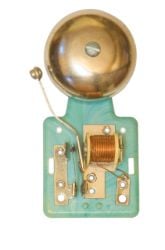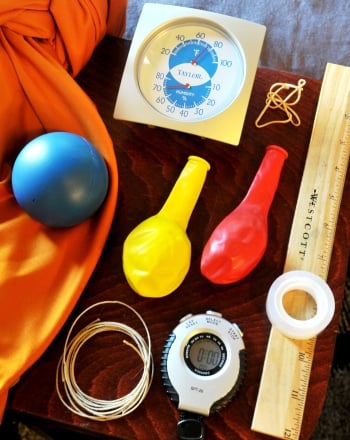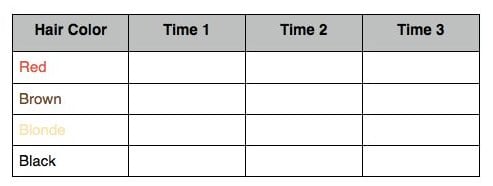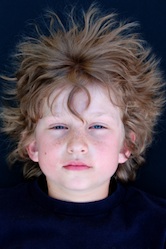Science project
Static Electricity,The New Flair: Blonde, Redhead or Brunette?
Difficulty of Project
Easy
Cost
$ 2 or less
Safety Issues
None
Material Availability
Most of the materials are readily available at home. Balloons may be purchased at stores such as Wal-Mart, Kmart or local toy stores.
Approximate Time Required to Complete the Project
One week. This includes collection, recording and analysis of data, summary of results and completion of bibliography.
Objectives
To determine whether the color of your hair affects how much static electricity it carries.
Materials and Equipment Required
- 10 hard rubber combs
- 6 balloons, of same size and color
- watch with a second hand.
Introduction
Background Information
The student will become acquainted with some of the basic static electricity concepts, such the atom and its parts: the nucleus, neutrons, protons, and electrons. Basic concepts include:
- Everything is made-up of atom.
- The atom may be viewed in part as a solar system with orbiting electrons.
- The components of the atom vary in their charges or lack of charges.
- Electrons have a negative charge, the protons, a positive charge and the neutrons carry no charge.
- Electrons move.
- Some materials hold tightly to their electrons, others loosely.
- When an excess of electrons build up on an object, it is described as static electricity.
- Static electricity can suddenly discharge, like when a bolt of lightning flashes through the sky.
- Other times, static electricity can cause objects to cling to each other, like socks fresh out of the dryer.
- The static is an attraction between two objects with different charges, positive (+) and negative.
- Static electricity can be created by rubbing one object against another. The result is the movement of electron from one subsysnce to another building up a charge, a charge waiting to be released
- Scientists have ranked materials in order of their ability to hold or give up electrons. This ranking is called the Turboelectric series.
- In this series, we find that if two materials are rubbed together, the one higher on the list will give up electrons and therefore become positively charged.
- Hair is third on the list. When you rub a balloon on your head the friction causes opposite static charges to build up in your hair and in the balloon. You can see these two opposite static charges attracting each other when you pull the balloon slowly away from your head making your hair stand up.
This science fair experiment also serves to acquaint students with the essential processes of scientific inquiry such as using a control, identifying dependent and independent variables, data collection, pictorial and graphic presentation of data, and of making accurate judgments as to the validity and reliability of their findings.
Research Terms
- atom
- nucleus
- electron
- proton
- law of attraction
- static electricity
- current electricity
- static charge
- static shock
- Triboelectric Series
- Law of Conservation of Charge
Research Questions
- What are the components of any atom?
- Do atoms have charges?
- What is static electricity?
- How does static electricity build up?
- How is it released?
- What are the dangers when it is released.
- How does static electricity differ from current electricity?
- What is the Turboelectric Series? How is it used?
Terms, Concepts and Questions to Start Background Research
- What is a control? A control is the variable that is not changed in the experiment.
- What purpose does a control serve? It is used to make comparisons as to what changed or possibly caused the change.
- What are variables? Variables are factors that can be changed in an experiment.
- What is an independent variable? The independent variable is the one that is changed in the experiment.
- What is a dependent variable? The dependent variable is the one that changes as a result of the change in the independent variable.
Charting and Graphing Data
In each section of the experiment, use charts to display the obtained data such the following sample:
Amount of Time Balloon Stuck to Wall in Seconds Subjects
Blonde=BL Brunette=BR Redhead =Red
|
Subjects |
Trial#1 |
Trial#2 |
Trial#3 |
Trial#4 |
Average Time |
|
BL#1 |
|
|
|
|
|
|
BL#2 |
|
|
|
|
|
|
BL#3 |
|
|
|
|
|
|
BL#4 |
|
|
|
|
|
|
BR#1 |
|
|
|
|
|
|
BR#2 |
|
|
|
|
|
|
BR#3 |
|
|
|
|
|
|
BR#4 |
|
|
|
|
|
|
Red#1 |
|
|
|
|
|
|
Red#2 |
|
|
|
|
|
|
Red#3 |
|
|
|
|
|
|
Red#4 |
|
|
|
|
|
Experimental Procedure
- State the problem you are going to investigate in this science fair project.
- Select your subject s, at least four blondes, four redheads and four brunettes in your class. Keep the gender the same, all boys or all girls. The larger the number, the more reliable and valid will be the results.
- Create the instruction sheets and the data sheets you will use to record your observations.
- Gather all your materials.
- Start with one subject at a time. Take the blown up balloon, the comb and the subject into a dark room. Have each subject charge the comb on her or his hair and then touch the charged comb to the balloon.
- Stick the balloon to the wall.
- Time how long the balloon sticks to the wall.
- Have the subject repeat the procedure twice again and record the average of the results.
- Repeat steps 4 through 7 for each of the subjects and record the data and the averaged data.
- Analyze your results and formulate your conclusion.
- Prepare your report and include all of the following: a clear statement of the problem, your hypothesis and the rationale for your prediction? Which hair color did you predict would generate the most static and why did you think so. List the materials used. Include any safety precautions taken. Describe the procedures used. Include all the data that were gathered. Include all charts and or graphs. State your conclusions. For dramatic value, you may include photos of the materials used or of you in the process of conducting this investigation. Include a bibliography of sources you used. You may wish to assess what you did and describe what you would do differently if you were to do this project again.
Bibliography
Education.com provides the Science Fair Project Ideas for informational purposes only. Education.com does not make any guarantee or representation regarding the Science Fair Project Ideas and is not responsible or liable for any loss or damage, directly or indirectly, caused by your use of such information. By accessing the Science Fair Project Ideas, you waive and renounce any claims against Education.com that arise thereof. In addition, your access to Education.com's website and Science Fair Project Ideas is covered by Education.com's Privacy Policy and site Terms of Use, which include limitations on Education.com's liability.
Warning is hereby given that not all Project Ideas are appropriate for all individuals or in all circumstances. Implementation of any Science Project Idea should be undertaken only in appropriate settings and with appropriate parental or other supervision. Reading and following the safety precautions of all materials used in a project is the sole responsibility of each individual. For further information, consult your state's handbook of Science Safety.













